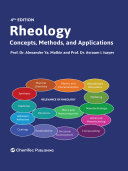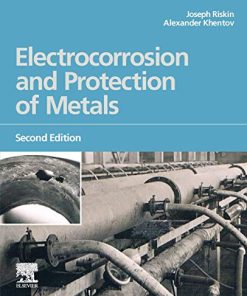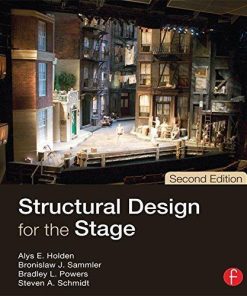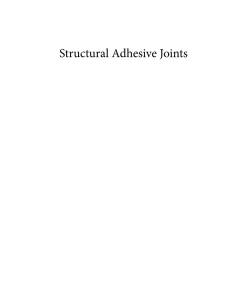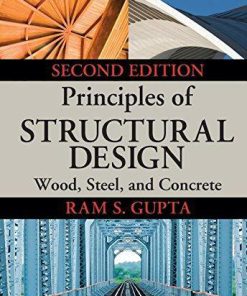(EBook PDF) Structural Renovation of Buildings Methods, Details, and Design Examples 2nd Edition by Alexander Newman 1260458342 9781260458343 full chapters
$50.00 Original price was: $50.00.$25.00Current price is: $25.00.
Structural Renovation of Buildings: Methods, Details, and Design Examples 2nd Edition by Alexander Newman – Ebook PDF Instant Download/DeliveryISBN: 1260458342, 9781260458343
Full dowload Structural Renovation of Buildings: Methods, Details, and Design Examples 2nd Edition after payment.
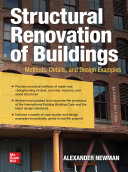
Product details:
ISBN-10 : 1260458342
ISBN-13 : 9781260458343
Author: Alexander Newman
Hands-on structural renovation techniques and best practices—thoroughly revised for the latest building codes This fully updated manual explains how to renovate the structure of any building. Up-to-date, comprehensive, and packed with savvy advice drawn from the author’s extensive experience, the book makes it easier for building professionals to plan structural improvements—and to handle unforeseen contingencies that arise during construction. The second edition of Structural Renovation of Buildings: Methods, Details, and Design Examples clearly explains the newest methods and materials used for structural repair, strengthening, and seismic rehabilitation. The case studies illustrate the practical applications of the design methods discussed and the best practices that can be used to mitigate the problems that commonly arise during renovation projects. The book: • Contains practical design methods and problem-solving techniques for structural strengthening and repairs • Explains the structural provisions of the 2018 International Existing Building Code as well as the latest specialized codes pertaining to steel, concrete, wood, and masonry renovations • Is written by a renowned structural engineer and experienced author
Structural Renovation of Buildings: Methods, Details, and Design Examples 2nd Table of contents:
1 The Challenge of Renovation
1.1 Terminology
1.2 When to Renovate
1.3 Beginning a Renovation Project
1.4 Typical Structural Challenges
1.5 Role of Building Codes in Renovation
1.6 Some Renovation Provisions of Previous Building Codes
1.7 The International Existing Building Code: General Issues
1.8 IEBC Provisions for Repairs (IEBC Chapter 4)
1.9 IEBC Provisions for Alterations
1.10 Change of Occupancy (IEBC Chapter 10)
1.11 Additions (IEBC Chapter 11)
1.12 Design Examples
1.13 Renovate or Rebuild?
References
2 Investigating Existing Conditions
2.1 Why Investigate?
2.2 Assessing Building Condition
2.3 Material Properties in Steel Systems
2.4 Concrete Framing
2.5 Load Testing of Concrete Structures
2.6 Post-Tensioned Concrete Framing
2.7 Wood Framing
2.8 Masonry
2.9 Building Envelope
References
3 Renovating Steel-Framed Buildings
3.1 Steel: The Venerable Material
3.2 Past Design Methods and Allowable Stresses for Iron and Steel Beams
3.3 Early Iron and Steel Columns
3.4 Properties of Early Fasteners
3.5 Open-Web Joists
3.6 Strengthening Floors and Roofs
3.7 Reinforcing Steel Members by Welding
3.8 Reinforcing Beams by Composite Action with Concrete
3.9 Strengthening Beam Connections
3.10 Composite Steel-Concrete Columns
3.11 Openings in Existing Steel Beams
3.12 Steel Corrosion: Evaluation and Protection
3.13 Thermal Prestressing of Steel Structures
References
4 Strengthening Concrete Buildings
4.1 Historical Perspective
4.2 Design Methods of the Past
4.3 Properties of Old Concrete and Reinforcing Steel
4.4 Some Early Proprietary Systems
4.5 Strengthening Concrete Beams
4.6 Strengthening Structural Slabs
4.7 Strengthening Concrete Columns
4.8 Openings in Existing Slabs
References
5 Repairing Deteriorated Concrete
5.1 Overview
5.2 Repairing Cracks
5.3 Corrosion of Reinforcement and Its Effects on Concrete
5.4 Patching Spalls and Deteriorated Areas
5.5 Cathodic Protection and Electrochemical Chloride Extraction
5.6 Corrosion Inhibitors
5.7 Other Types of Damage to Concrete
5.8 Materials for Concrete Repair
5.9 Durability of Repairs
5.10 Systematic Maintenance Programs
References
6 Renovating Slabs on Grade
6.1 Introduction
6.2 Field Investigation
6.3 Cracking
6.4 Surface Deterioration
6.5 Slab Settlement, Heaving, and Curling
6.6 Joint Failures
6.7 Water Penetration or Emission
6.8 Chemical Attack
6.9 Slab Replacement
6.10 Slab Overlays
6.11 Improving Abrasion Resistance
6.12 Repair of Deteriorated Overlays, Toppings, and Hardeners
References
7 Renovating Post-Tensioned Concrete
7.1 System Overview
7.2 Evolution of Post-Tensioned Structures
7.3 Typical Reasons for Repair of Post-Tensioned Buildings
7.4 Planning for Repairs
7.5 Nondestructive Testing
7.6 Destructive Testing
7.7 Repair Methods
7.8 A Step-by-Step Example: Replacing Post-Tensioned Stressing-End Anchorage
References
8 Renovating Wood Structures
8.1 Historical Background
8.2 Wood Deterioration
8.3 Detecting Deterioration
8.4 Preventing Deterioration
8.5 Shrinkage and Defects
8.6 Repairing Wood Members
8.7 Strengthening Wood Members
8.8 Renovating Wood Trusses
8.9 Case Study 1: Repairing Termite Damage in Trusses
8.10 Case Study 2: Restoring Fire Damage to the Exeter Street Theater
References
9 Renovating Masonry
9.1 Masonry as a Construction Material
9.2 Evolution of Masonry Design Methods
9.3 Evaluation of Masonry Structures
9.4 Masonry Repair
9.5 Strengthening Masonry Structural Elements
9.6 Repairing Masonry Arches
9.7 Other Masonry Renovation Tasks
References
10 Renovating Metal Building Systems
10.1 Introduction
10.2 Evolution of Metal Building Systems
10.3 Primary Frames
10.4 Expansion of Metal Building Systems
10.5 Lateral Stability
10.6 Secondary Framing
10.7 Wall Materials
10.8 Metal Roofing
10.9 Insulation and Vapor Retarders
10.10 Renovation Checklist
10.11 Case Study
References
11 Strengthening Lateral Load–Resisting Systems
11.1 Lateral-Load Basics
11.2 Lateral Load–Resisting Systems
11.3 A Brief History of Wind and Seismic Codes
11.4 Code Provisions for Seismic Upgrading
11.5 Typical Tasks for Lateral-Load Upgrading
11.6 Reinforcing Diaphragms
11.7 Reinforcing Wood, Steel, and Masonry Buildings
11.8 Reinforcing Concrete Buildings
11.9 Energy-Dissipating Devices
11.10 Seismic Isolation
11.11 Reinforcing Nonstructural Elements
References
12 Case Studies in Seismic Upgrading
12.1 Case 1: Seismic Upgrading of a Former Industrial Building
12.2 Case 2: Proposed Renovation of an Unreinforced-Masonry Building
12.3 Case 3: Seismic Upgrade of Terminal 1, Oakland International Airport
12.4 Case 4: Seismic Retrofit of the Administration Building, San Francisco State University
13 Renovating Building Façades
13.1 General Issues
13.2 Curtain-Wall Problems Caused by Structural Forces and Movements
13.3 Water Leakage
13.4 Rehabilitating Solid Masonry Walls
13.5 Brick-Veneer Walls with CMU Backup
13.6 Brick-Veneer Walls with Steel Studs
13.7 Repairing Brick-Veneer Walls
13.8 Repairing Stone and Stone-Panel Walls
13.9 Rehabilitating Exterior Insulation and Finish Systems
13.10 Rehabilitating Other Wall Types
People also search for Structural Renovation of Buildings: Methods, Details, and Design Examples 2nd:
structural renovation of buildings alexander newman
structural renovation of traditional buildings pdf
structural renovation of traditional buildings
what is a structural renovation
what is considered a structural renovation
You may also like…
Earth Sciences - Geology
Engineering - Civil & Structural Engineering
Uncategorized
Principles of Structural Design: Wood, Steel, and Concrete, Second Edition – Ebook PDF Version 2nd
Uncategorized
Unlocking the Mysteries of Cataloging: A Workbook of Examples, 2nd Edition 2nd Edition, (Ebook PDF)




